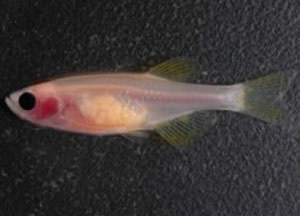Like yin and yang, apoptosis has a duality. While it is is a pathway used in the normal maintenance and development of tissues in healthy organisms it also had a dark side.
As you can imagine, apoptosis is a tightly regulated process – controlled by the integration of multiple pro- and anti-apoptotic signals. Ultimately the induction of apoptosis occurs through the activation of the caspase proteases that are responsible for coordinating the hallmarks of an apoptotic death: cell shrinkage, chromatin condensation, membrane blebbing and DNA fragmentation.
Understandably, bad things happen when apoptotic pathways are disrupted. Below are some examples of what happens when apoptosis is not well-regulated. For a deeper understanding of these processes, check out the article by Favaloro et al.
Apoptosis in cancer
Almost all cancer cells are resistant to apoptosis. While unchecked proliferation of cells normally stimulates the apoptotic pathway, a shut down of the pathway through mutation allows for growth of the cancer. To avoid apoptosis, mutations in cancer cells will either inhibit expression of pro-apoptotic proteins, such as the p53 tumor suppressor, or increase expression of anti-apoptotic signals. Indeed, malignant cells often show over-expression of inhibitors of apoptosis protein (IAP) family members. To counteract this, pro-apoptotic drugs can be used for chemotherapy (such as IAP antagonists).
Viruses use the cell death pathways for their own survival
Infection with intracellular pathogens, such as viruses, can trigger apoptotic pathways – it is a great way to prevent the spread of infection. Therefore, many viruses take control over the apoptotic system of the host cell upon infection.
Shutting down apoptosis
Viruses from many different families inhibit apoptosis of cells. Herpesviruses are excellent examples of viruses that shut down apoptosis. As part of their lifecycle, herpesviruses enter a state of latency, which means they hide out in the host cell for extended periods with little to no virus production. This is complemented by the lytic cycle, during which virus particles are rapidly produced and assembled before the virus is released. While in the latent phase, the virus keeps the host cell alive by suppressing apoptosis. As an argument for how important this is for the virus,herpesviruses use multiple proteins and multiple mechanisms to inhibit apoptosis. While this is advantageous to the virus, it means that the host can never completely clear the virus and will always be infected.
Inducing apoptosis
Alternatively, some viruses can increase apoptosis in certain cell types. Infection with human immunodeficiency virus (HIV) brings about a 95% depletion of non-infected CD4 T-cells (T-helper cells). Until recently, this was thought to be executed through up-regulation of a pro-apoptotic signal in T-cells which then initiates apoptosis. However this year, it has become clear that thesecells undergo a different form of regulated cell death, called pyroptosis. Pyroptosis is accompanied by a strong inflammatory reaction and induced by activated caspase 1, marked by the release of the cytokine Interleukin 1-?. This finding makes caspase 1 a promising new drug target for HIV therapy.
Neurological disorders
Cell death accompanies neurodegenerative disorders, which are characterized by loss of neurons. There is much left to learn, but the involvement of caspases has been characterized to some extend:
– In Alzheimer’s disease, the cleavage of amyloid precursor protein (APP) into A? peptides leads to their accumulation in the form of plaques, and tau proteins form neurofibrillary tangles. APP has been shown to be cleaved by the apoptotic kinases caspase 3 and caspase 6, and tau can serve as a substrate for caspase 3. Interestingly, inhibiting apoptosis by overexpression of the anti-apoptotic regulatory protein bcl-2 can lead to a reduction of Alzheimer’s symptoms.
– A common mutation found in Parkinson’s leads to the inactivation of a gene encoding the mitochondrial kinase PINK1. This kinase has a function in inhibition of apoptosis and thus its loss leads to an increase in caspase activity.
– Caspases are also involved in Huntington’s disease, which is caused by a mutation in the huntingtin protein (htt). The mutant protein can be cleaved by caspases; in particular, caspase 6 has been implicated.
Like so many other biological pathways, the maintenance of a healthy organism requires a delicate balance of apoptotic signals. Stay tuned for my final article in which I will show you different techniques to determine if this balance is being maintained.
References
- B. Favaloro, N. Allocati, V. Graziano, C. Di Ilio, and V. De Laurenzi.. (2012). Role of apoptosis in disease. Aging. 4(5): 330–349







